Judge the following items, which refer to text tipology.
Texts can be classified in terms of their communicative intentions.
Judge the following items, which offer a suggestion for a translation
into Portuguese of passages in English.
Consider the following passage (adapted from Internet: www.pearsonlongman.com).
The Mayan Indians lived in Mexico for thousands of years before the Spanish arrived in the 1500s. The Maya were an intelligent, culturally rich people whose achievements were many. They had farms, beautiful palaces, and cities with many buildings. The Mayan people knew a lot about nature and the world around them. This knowledge helped them to live a better life than most people of that time, because they could use it to make their lives more comfortable and rewarding. Knowledge about tools and farming, for instance, made their work easier and more productive.
An appropriate and correct translation of this passage would be: Os índios maias viveram no México há milhares de anos, mesmo antes da chegada dos espanhóis em 1500. Os maias eram um povo inteligente, culturalmente rico, cujas conquistas foram muitas. Eles tinham fazendas, belos palácios e cidades com muitos edifícios. O povo maia sabia muito sobre a natureza e o mundo ao seu redor. Esse conhecimento os ajudou a viver uma vida melhor do que a maioria das pessoas daquele tempo, porque poderiam usá-lo para tornar suas vidas mais confortáveis e gratificantes. Conhecimento sobre ferramentas e agricultura, além disso, fizeram o seu trabalho mais fácil e mais produtivo.
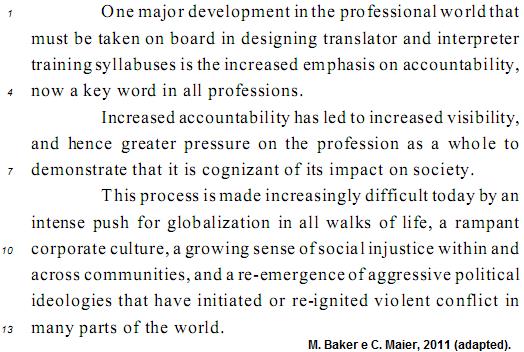
Based on the text above, judge the items below.
The fragment that must be taken on board (L.1-2) can be correctly translated as que deve influenciar.
Considering translation and some of the notions it envolves, judge
the following items.
Context can be defined as extra-textual features which determine the translation of a linguistic expression or a whole text.
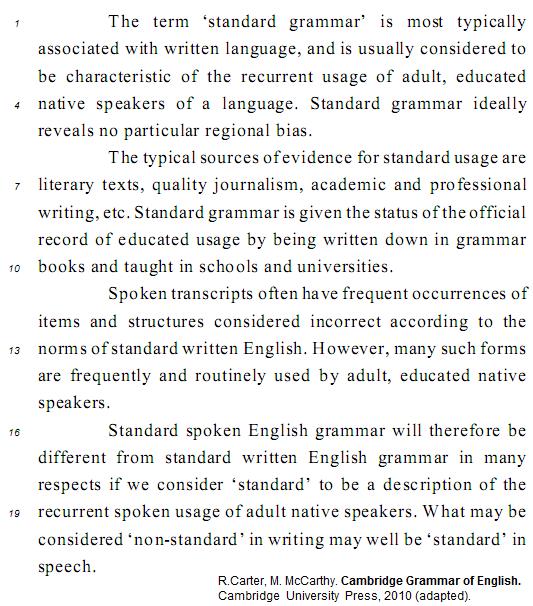
Each of the following items offers a suggestion for a translation into Portuguese of some excerpts of the text above. If the proposed translation is accurate and acceptable label the item C (certo). Otherwise, label it E (errado).
The typical sources of evidence for standard usage are literary texts, quality journalism, academic and professional writing, etc. (L.6-8) As fontes típicas que evidenciam o uso padrão são os textos literários, o jornalismo de qualidade, os escritos acadêmicos e profissionais etc.
In the sentence
The new gas stove in the kitchen which I bought last month has a very efficient oven., the subject is The new gas stove in the kitchen.
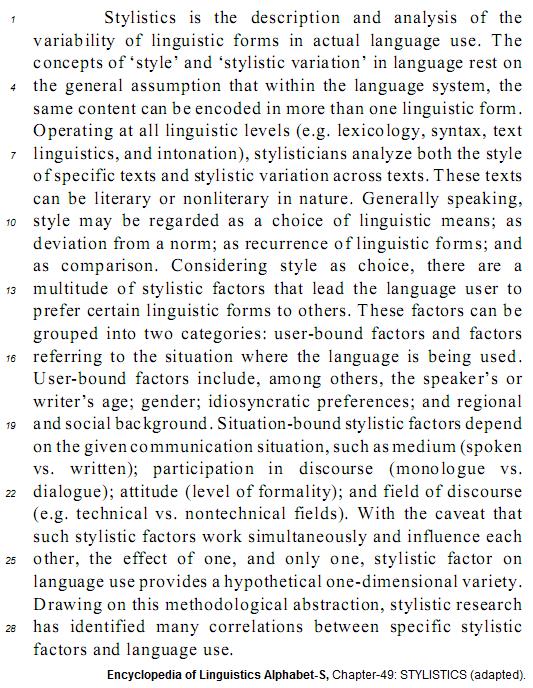
In the fragment
style may be regarded as a choice of linguistic means
(L.10),
regard means to consider or have an opinion about something or someone.
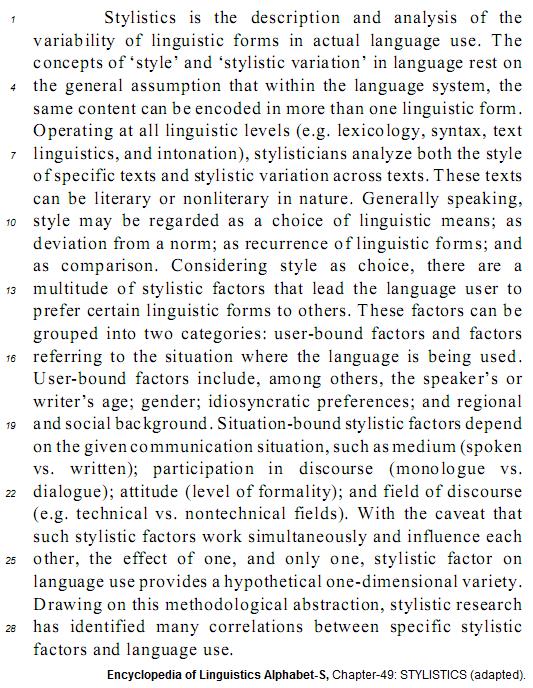
Each of the following items offers a suggestion for a translation into Portuguese of some excerpts of the text above. If the proposed translation is accurate and acceptable, label the item C (certo). Otherwise, label it E (errado).
Stylistics is the description and analysis of the variability of linguistic forms in actual language use.(L.1-2) A Estilística consiste na descrição e análise das variações das formas linguísticas em uso corrente na língua.
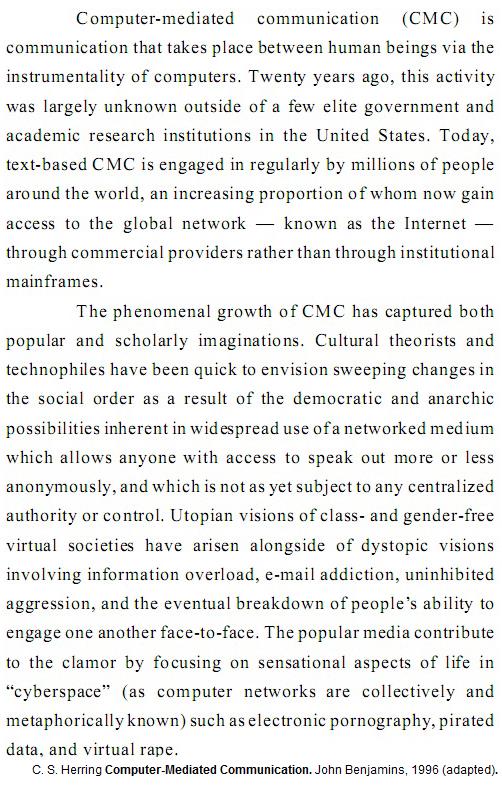
Based on the text above, judge the following items.
The media have been bringing about harmful effects to society.
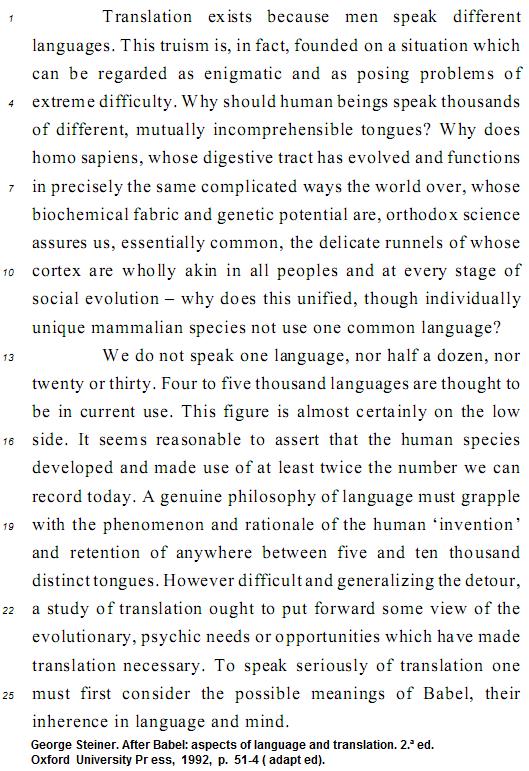
Based on the text, judge the items from 111 to 120.
However (L.21) can be correctly replaced by notwithstanding.
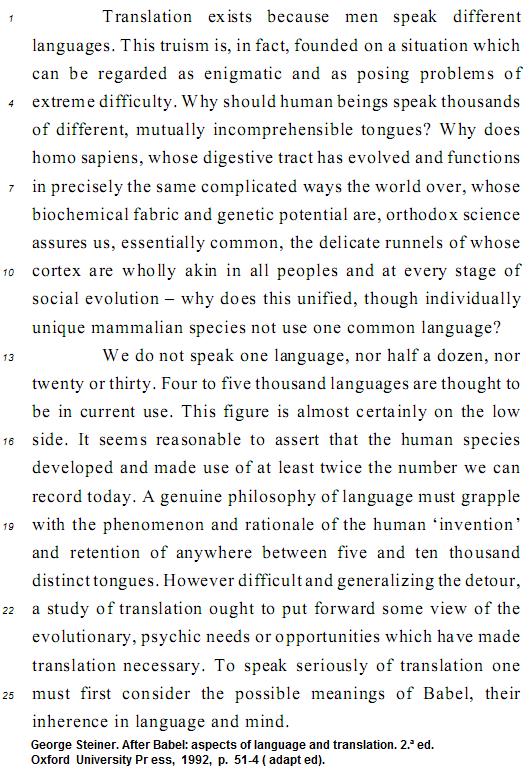
Based on the text, judge the items from 111 to 120.
In the text, the expression to put forward (L.22) can be correctly replaced by define or establish.
Considering linguistics aspects of English, judge the following
items.
The following sentence presents a problem of meaning: Emotion is running high at the moment, but that emotion must not be allowed to temper sensible judgement.

Considering the SONY TV ad above, it is correct to state that
cutting edge (L.1) means different.
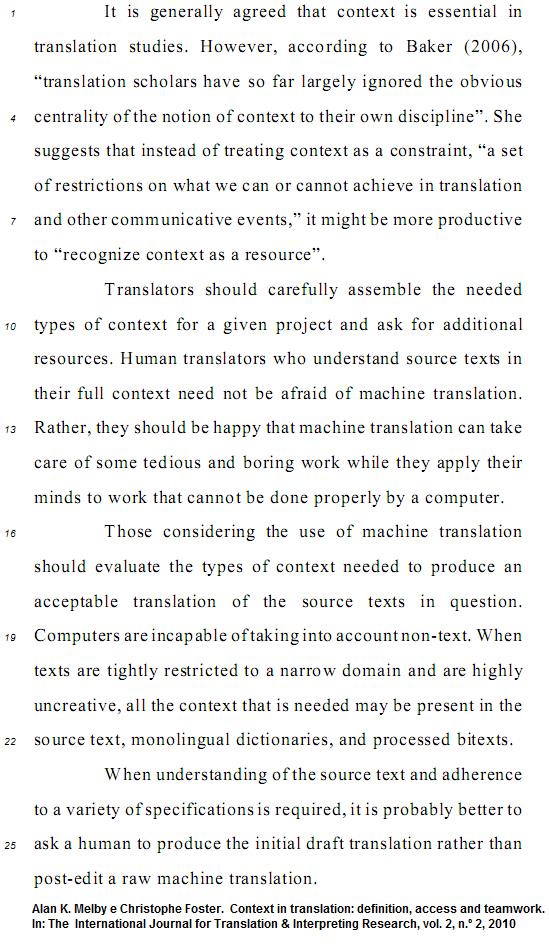
Considering the text and the topics to which it refers, judge theitems below.
The word assemble (L.9) is synonymous with gather or put together.
Judge the following items, which refer to text tipology.
Attempts at building text type based models for translation practice has proved controversial because text types often exhibit overlapping features.

